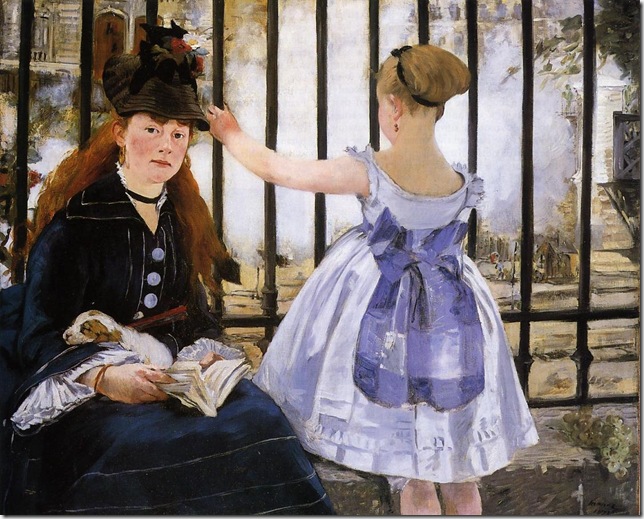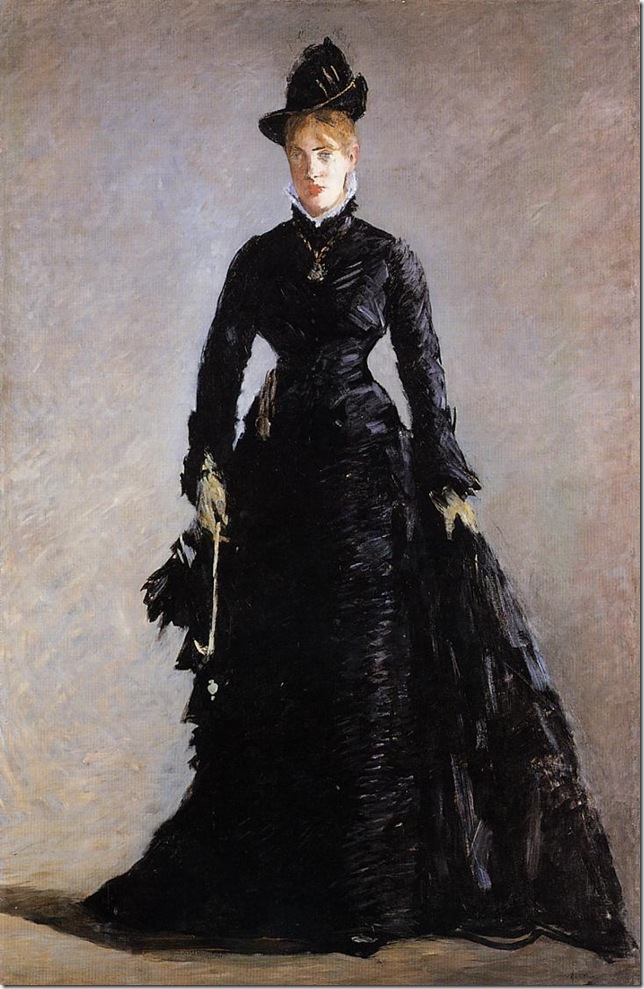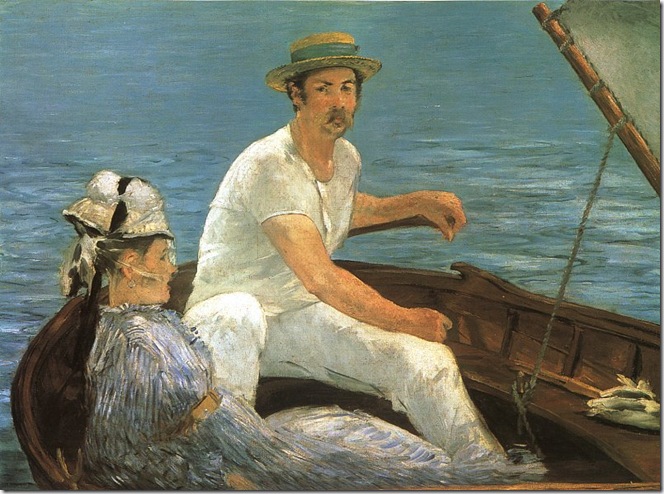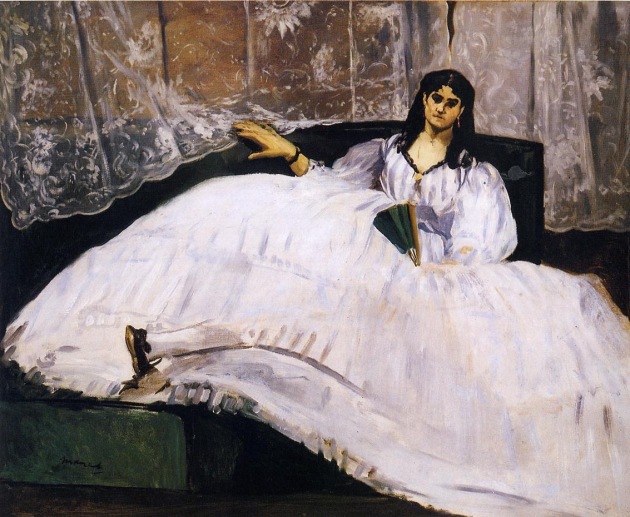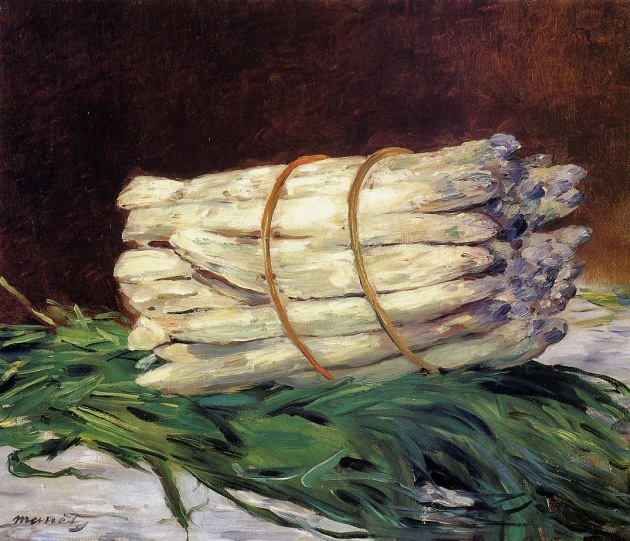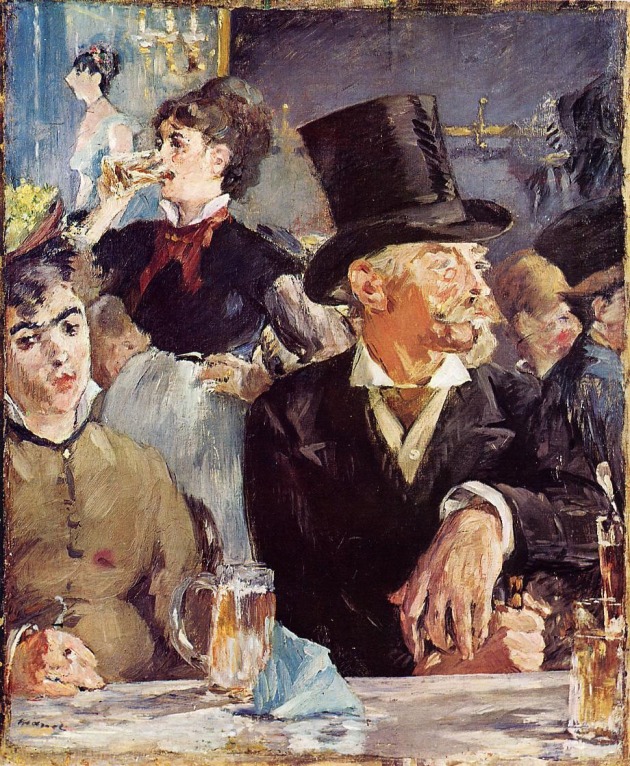
Manet’s paintings of cafe scenes are observations of social life in 19th-century Paris. People are depicted drinking beer, listening to music, flirting, reading, or waiting. Many of these paintings were based on sketches executed on the spot. He often visited the Brasserie Reichshoffen on boulevard de Rochechourt, upon which he based At the Cafe in 1878. Several people are at the bar, and one woman confronts the viewer while others wait to be served. Such depictions represent the painted journal of a flâneur. These are painted in a style which is loose, referencing Hals and Velazquez, yet they capture the mood and feeling of Parisian night life. They are painted snapshots of bohemianism, urban working people, as well as some of the bourgeoisie.
In Corner of a Cafe Concert, a man smokes while behind him a waitress serves drinks. In The Beer Drinkers a woman enjoys her beer in the company of a friend. In The Cafe Concert, shown at right, a sophisticated gentleman sits at a bar while a waitress stands resolutely in the background, sipping her drink. In The Waitress, a serving woman pauses for a moment behind a seated customer smoking a pipe, while a ballet dancer, with arms extended as she is about to turn, is on stage in the background.
Manet also sat at the restaurant on the Avenue de Clichy called Pere Lathuille’s, which had a garden as well as the dining area. One of the paintings he produced here was, Chez le père Lathuille, in which a man displays an unrequited interest in a woman dining near him.
In Le Bon Bock, a large, cheerful, bearded man sits with a pipe in one hand and a glass of beer in the other, looking straight at the viewer.
